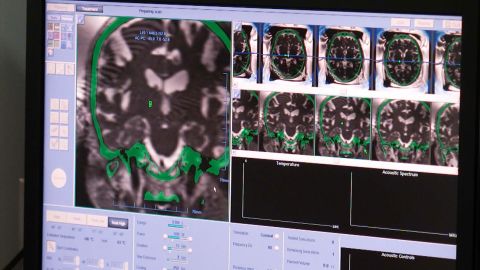And all these from earlier research means our stroke leaders should be focusing on this and getting protocols ready for widespread use. But since we have NO STROKE LEADERSHIP; not a damn thing will be done. Don't plan of having a stroke anytime soon and make damn sure your children and grandchildren never have strokes. You'll have to hope you win against the odds of getting to 100% recovery when you are the 1 in 4 per WHO that has a stroke.
Combined therapy of focused ultrasound and aducanumab induces neurogenesis and decreases of beta-amyloid plaques in a mouse model of Alzheimer’s disease August 2022
And this from July 2018:
Ultrasound Could Help Improve Dementia Symptoms July 2018
And this from December 2021:
Using Micro-Ultrasound to Investigate the Effectiveness of Short-Term Rehabilitation following Focal Ischemic Stroke December 2021
Alzheimer’s breakthrough uses ultrasound technology March 2015
ultrasound (69 posts to March 2012)
The latest here:
A sound you can’t hear but may one day change your life
Brenda Hric consults with neurosurgeon Dr. Jeff Elias, who conducted her focused ultrasound.
Undergoing clinical trials around the world is a brain surgery that doesn’t need an incision or produce any blood yet drastically improves the lives of people with essential tremor, depression and more. The procedure, known as a focused ultrasound, aims sound waves at parts of the brain to disrupt faulty brain circuits causing symptoms.
“Focused ultrasound is a noninvasive therapeutic technology,” said Dr. Neal Kassell, founder and chairman of the Focused Ultrasound Foundation. “We’ve said that focused ultrasound is the most powerful sound you will never hear, but sound that someday could save your life.”
Kassell describes the way it works as “analogous to using a magnifying glass to focus beams of light on a point and burn a hole in a leaf.”
“With focused ultrasound, instead of using an optical lens to focus beams of light,” he added, “an acoustic lens is used to focus multiple beams of ultrasound energy on targets deep in the body with a high degree of precision and accuracy, sparing the adjacent normal tissue.”
The procedure has been significantly beneficial for people with essential tremor, a neurological disorder that causes involuntary and rhythmic shaking. The disorder can affect almost any body part, but the tremors typically occur in hands — even during simple tasks such as eating, drinking or writing.
Essential tremor is usually more prominent on one side of the body and can worsen with movement. It’s most common in people 40 and older, and it affects nearly 25 million worldwide, according to a 2021 study.
Such was the case with Brenda Hric, 80, who recently underwent focused ultrasound at the University of Virginia, a pioneering institution of the procedure.
Hric’s tremors made her uncomfortable in social situations because she was afraid of spilling or knocking something over, she told CNN.
But just 44 seconds of focused ultrasound waves got rid of her tremor.
“I looked at my hand, and I could see that it was not moving, and that was the first time I had been able to see my fingers still in about 20 years,” Hric said. “I think it’s definitely a miracle, and I thank the Lord for it.”
How it works
Focused ultrasound is a form of functional neurosurgery, the targeting of precise structures deep in the brain to change it, to restore function or, in this case, to stop a tumor. It’s an alternative treatment for those who, like Hric, don’t respond to or stop being affected by conventional medication treatment, experts said.
“In a simplistic sense, you can imagine that there’s a bunch of abnormal neurons in this one target that are firing away uncontrollably, causing the tremor, the shaking,” Kassell said.
Focused ultrasound technology uses a transducer to force beams of sound waves to converge at one point to raise the temperature and destroy tissue.
Before receiving high-intensity focused ultrasound, the one necessary for treating essential tremor, patients need to have their heads shaved since air can sometimes get trapped in hair follicles.
The patient then undergoes MRI and CT scans so doctors can use the resulting images to map the structure of the brain and the target.

The Insightec Exablate Neuro, a focused ultrasound platform, instructs how many beams should be used to do the treatment, then neurosurgeons might do what Dr. Jeff Elias calls “test shots, just to make sure we’re focused right at the bull’s-eye.”
A UVA Health neurosurgeon who treated Hric, Elias is a pioneer of treating essential tremors using ultrasound waves. In 2011, he led the clinical trials critical for gaining regulatory approval of this procedure in the United States.
“These (test shots) are really low energy, but we want to see if our treatment is exactly where we want it,” he said. “This is our chance to kind of sight the rifle.”
Four 11-second treatment doses significantly improved Hric’s tremor. The entire procedure lasted less than two hours, with most of it spent mapping the brain and testing the target.
Beforehand, Hric had trouble drawing inside the lines of circles. Focused ultrasound helped her color inside the lines.
Pros and cons
Generally, anyone with an essential tremor diagnosis not responding to medications would be eligible for focused ultrasound treatment, said Dr. Nir Lipsman, a scientist at Sunnybrook Health Sciences Centre in Toronto and director of Sunnybrook’s Harquail Centre for Neuromodulation.
People who can’t undergo MRI scans due to claustrophobia or having metal inside their body aren’t eligible for focused ultrasound, said Dr. Noah Philip, a professor of psychiatry and human behavior at Brown University’s Alpert Medical School. Philip is also lead for mental health research at the VA RR&D Center for Neurorestoration and Neurotechnology.
Ideally, the benefits of focused ultrasound are permanent, Lipsman said. “If you’re able to destroy the part of the brain responsible for the tremor, it should be a permanent effect,” he said. “At one year, however, some of these patients will have a rebound or recurrence of their tremor, and we don’t know why that is.”
Such a return can happen with medication treatment, too, though — which is why some essential tremor patients turn to focused ultrasound in the first place.
But some patients have experienced the benefits five years after undergoing focused ultrasound, according to a 2022 study by Elias.
Potential side effects of focused ultrasound are why the mapping and testing parts of the procedure are so important. If the wrong area is targeted or treated excessively, a patient’s balance and stability can be harmed long term.
“The most common risks that we encounter in patients is a temporary numbness or tingling that can sometimes happen in the treated arm or in the lip area,” Lipsman said. “The vast majority of the time that goes away with time.”
Other common, but usually temporary, risks include slight unsteadiness on one’s feet after the procedure. But doctors don’t use a general anesthetic or hospitalize patients for this procedure, he added.
What’s next in the field
Today, focused ultrasound technology is used globally in various stages, including clinical trials and approved regulatory use. There are more than 170 clinical uses — including for neurodegenerative disorders and tumors of the brain, breast, lung, prostate and more — and the field is growing, Kassell said.
“You can watch the effect of the ultrasound treatment in real time while the treatment’s being administered, whereas with radiation, the effect of the treatment is invisible while it’s being administered,” Kassell said. “And it takes weeks or months for the effect of radiation to become apparent.”
Use for depression and obsessive-compulsive disorder is on the table, according to a small 2020 study by Lipsman and a team of researchers. They found focused ultrasound was safe and effective in improving symptoms for people with major depression and OCD. But further studies are needed.
One limitation of focused ultrasound is that not every person’s skull is made equal, Lipsman said.
“The density of the skull has a major impact on the ability of ultrasound to travel through it,” he added. “It’s rare, but there are some patients that, try as we might, we cannot make an effective lesion in the brain. The skull does not allow the passage of ultrasound. So that’s a technical limitation of the technology, something that we’re actively working on.”
Focused ultrasound isn’t available for every condition, but experts said they are hopeful that “medicine’s best-kept secret” will one day become a standard treatment.
“My belief is that in 10 years,” Kassell said, “focused ultrasound will be a mainstream therapy that is affecting millions of patients every year around the world. It’ll be widely accepted.”



No comments:
Post a Comment